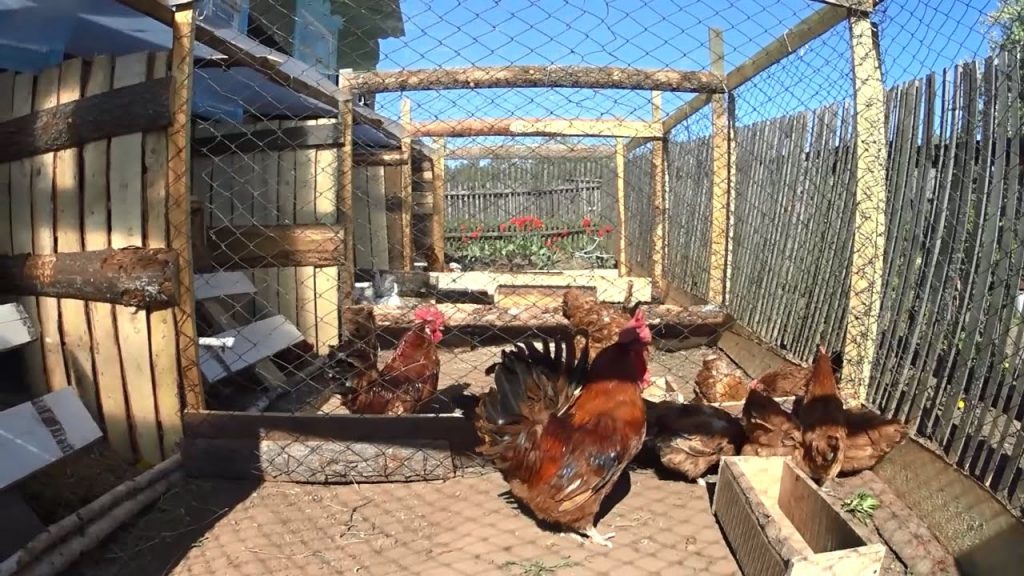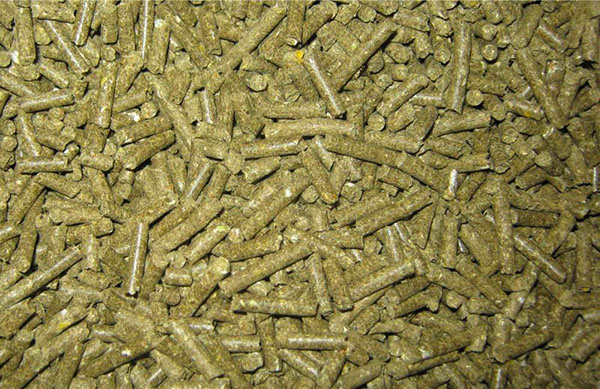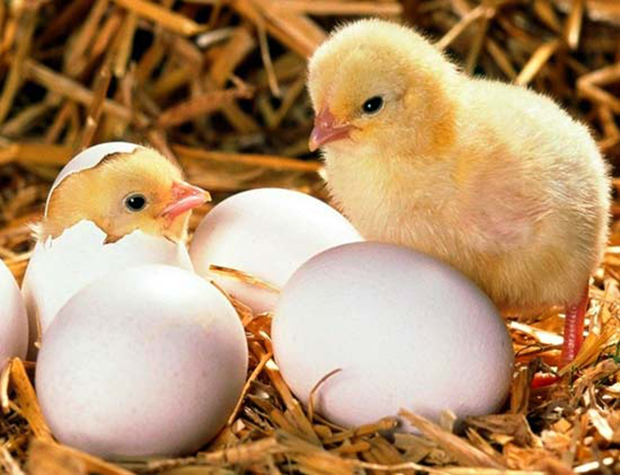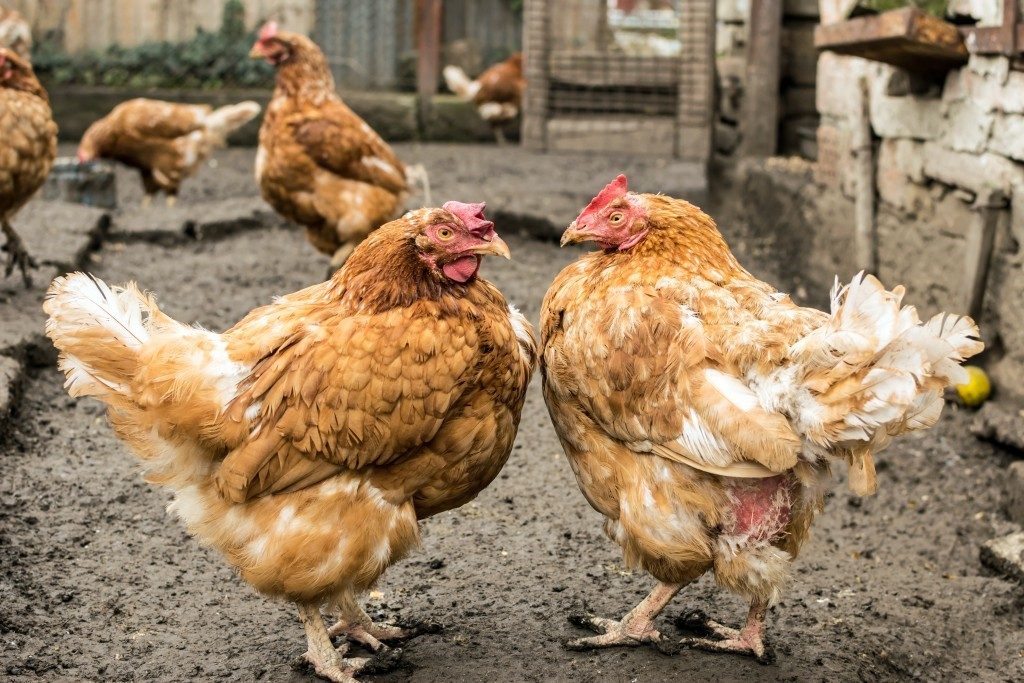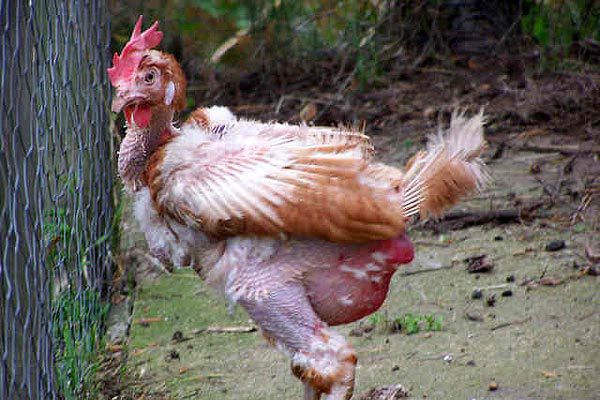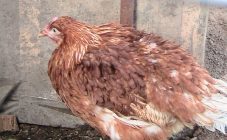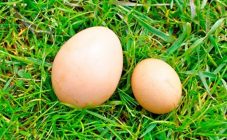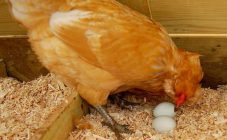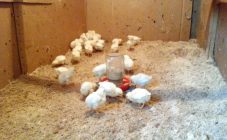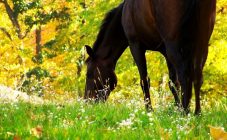The most common poultry in agriculture is chicken. They contain chickens for obtaining eggs, meat, for decorative purposes. Laying hens can produce 200-300 eggs per year, meat breeds can reach a weight of 3.5-4.5 kg. However, in any case, in order to maintain the health of chickens, increase egg production or stimulate weight gain, it is necessary to follow certain requirements, non-compliance with which can provoke the death of the livestock from diseases or from the manifestation of cannibalism.
Chicken care rules
There are two ways to keep chickens: walking or in cages. To equip a chicken coop with a fenced-in walking area, remember that 1 sq. meter of area can be populated no more than 6 individuals. Consequently, more chickens will require an impressive area.
The floor should not be cold, this will lead to constant colds in the bird. By covering it with straw, hay remains, sawdust, you can create basic thermal insulation. The main care of chickens in aviaries consists of cleaning and airing the premises.
To save money, you can feed the chickens with leftover food from the table. It can be fish, meat waste. However, it would be more correct to use ready-made feed mixtures. They are carefully balanced and graded for each age separately.
When making mash yourself, you can use various cereals, chopped vegetables, bran. This choice of diet is more complicated, but it allows you to control the quality of the feedstock yourself. In this case, it is required to constantly monitor the health of the chickens - a lack of vitamins and trace elements can lead to serious diseases and death.
Drinking water should always be available. It should be free of sediment, impurities or odor. Dirty water can be a source of intestinal infections. Drinkers should be easy to use by birds, easily accessible for cleaning and water changes.
When choosing egg breeds, it is imperative to establish nests and perches for layers. When choosing a place for a nest, preference should be given to quiet, secluded places, from where the bird will not be disturbed by extraneous noise. It is also better to raise the place for installation above the floor level by 30 cm. This arrangement will be optimal for the process of laying eggs. The nest should be equipped with bumpers from which the hen can safely, without injuring the eggs, climb into the nest.
From the moment the eggs are laid until the chicks hatch, the hen must leave the clutch to meet the physiological needs. If this does not happen, you should carefully pull the hen out for a walk. During this time, cover the eggs with a cloth to keep them warm.
The process of keeping broiler breeds does not differ from laying hens. The essential difference is the choice of feed. It must be highly nutritious for the bird to gain weight well. It is more convenient to keep the livestock of broiler chickens in cages. This method simplifies hygienic cleaning, feed dispensing and water change procedures.
There are some nuances for raising roosters. A balanced diet plays an important role in gaining body weight and the ability to fertilize eggs. The main diet practically does not differ in composition from chicken feed.Commonly used are the same grains, vegetables, animal products and green juicy herbs. A poorly balanced diet negatively affects both mating efficiency and sperm fertility.
The maximum fecundity of males is observed when 85% of the daily share of feed is dispensed, provided that the feeders are not empty.
For males bred for slaughter, the basis of the diet should be easily digestible protein food: dairy products or boiled eggs.
After the chicks hatch, wait until the feathers are completely dry. Newly hatched chicks should have a separate area equipped with a heating system and a lamp. The floor for chicks should not be slippery, otherwise the chicks will suffer from musculoskeletal injuries. The temperature regime changes with age, gradually decreasing from 32 ° C to 20-24 ° C. Initially, it is required to feed cereals with fine grains (corn, semolina, millet) every 2 hours. Gradually it is necessary to introduce dairy products, fresh herbs and meat, - fish meal. As with adults, it is important to maintain cleanliness in the room, for this you need to regularly sanitize.
Why do chickens pluck feathers
A frequent question when keeping chickens becomes “Why do chickens pluck feathers from each other and eat them?”.
Lack of trace elements and vitamins can trigger feather loss. Also, seasonal molting and feather change in young individuals are natural processes. "Chickens eat feathers. What's missing?" a logical question arises. What to do when chickens pluck each other's feathers?
To identify the reasons for the pecking of feathers both in oneself and in other individuals, it is necessary to analyze the following points:
- Feed. Inadequate composition of feed, lack or excess of substances can cause untimely loss of feather cover. Lack of sulfur is often accompanied by attempts to pluck feathers.
- Population too dense. Aggression in chickens can often manifest itself in the cold season, when the area for keeping is very limited. Larger individuals can begin to suppress, trying to peck young growth. The only way out in such a situation is to resettle the individuals in different rooms.
- Bright light. Light is essential for the proper growth and development of young chicks. However, with excessive brightness of lighting, birds may begin to show aggression towards each other, trying to peck out feathers. More powerful bulbs should be replaced or painted blue. This procedure will help to moderate aggressive behavior.
- Different breeds. When keeping different breeds of chickens, the beginning of pecking and eating of feathers is noted in birds that have lighter plumage in relation to dark chickens. This may be one of the reasons why chickens peck feathers. This is especially noticeable when broilers eat feathers from other breeds.
- Stress. With a sharp change in the conditions of detention (temperature, different food, moving to another room), experiencing stress, the chickens begin to pull out their feathers.
When plucking feathers from each other, chickens injure the skin. After the individual tastes the blood, cannibalism begins to manifest. This phenomenon leads to bleeding and death of the individual.
The reasons for this pathology may be:
- Genetically fixed mutations. With the selection of certain factors in new breeds (high egg production, increased body weight), some signs of cannibalism may be fixed.
- Frequent feed changes. With a constant change in the diet, a deficiency of substances necessary for normal life can form.Such a factor can trigger the onset of pecking.
- A heterogeneous population in terms of age and size of individuals can play a role in restricting smaller and weaker individuals. Larger individuals pull out feathers from weak ones and peck small chickens.
- Infection of the livestock with parasites and various fungal diseases causes severe discomfort, provoking birds to peck feather cover and eat feathers.
- Layers who are not ready to realize the maternal instinct can begin to peck out the first clutch of eggs, after which they switch to other individuals.
Pecking Prevention Techniques
When this behavior occurs, you must immediately start looking for the reasons. Otherwise, injured individuals may die.
To prevent the appearance of undesirable behavior in the form of injury to oneself by a chicken and other individuals, the following manipulations can be performed:
- Choose a ready-made, balanced feed. If homemade mash is used, then their composition should be as diverse as possible. The addition of fiber, protein components will help fill the lack of substances. The use of crushed grains can control aggression in behavior.
- Subdued white or blue light helps the birds to calm down and break the habit of pecking at each other.
- Abrasive substances can be added to the feed. When birds chew food, they will grind off the beak, making it blunt. Pecking with such a beak becomes impossible. You can also grind off a sharp beak using specialized equipment.
- Equipping the house with a walking area can eliminate the need to peck feathers. Chickens will be able to run away and spread their wings, distracting from the unpleasant habit of pinching their relatives.
As in any population, chickens in a flock have different ages. Problems of rejection of young birds by old birds are often encountered in poultry farming. This can be avoided by initially keeping the stronger individuals separate from the weak. Over time, aggression can be eliminated.
In conclusion, we can say that raising chickens is a responsible multicomponent process. To obtain a healthy and strong livestock, the following conditions are necessary: good feed, sufficient lighting, spacious areas and temperature conditions. With a lack or an overabundance of one or another factor, aggressive behavior of some individuals in relation to others may begin to appear. When biting and injuries are found in chickens, the first step is to analyze the initial conditions of detention. If the conditions are met without fail, you should suspect the presence of pests and seek help from specialists.
